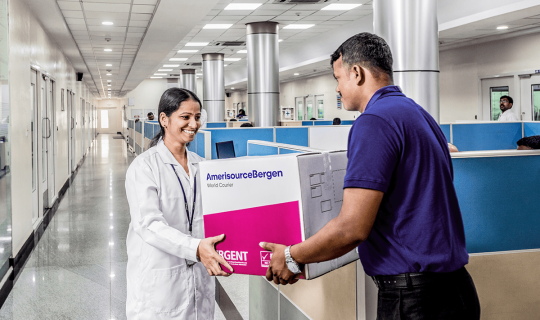Article: The Cost of Failure Part 2: The Patient
By Ruediger Lomb
The
pharmaceutical industry is quickly realizing that the value that a quality-first
mindset creates within the supply chain far outweighs the cost savings
associated with not investing in it. By focusing exclusively on cost-cutting in
the supply chain — at the expense of the product and its delivery— you risk the
wellbeing of the patients that you aim to treat.
Quality within the supply chain must continue
after the product has left the manufacturer. However, quality can only be
properly achieved when the right patient, receives the right drug, at the right
time and in the right condition - demonstrating the significance of
post-manufacturing delivery as a critical part of the supply chain and quality
equation. But why?
The purpose of drug manufacturing and specialty logistics is to move healthcare forward, with the overarching aim of improving patient wellbeing. Yet a lapse in quality has the potential to cause excursions in delivery time and temperatures which can adversely impact the product and consequently, your patient’s health in a multitude of ways.
What does a lapse in quality really mean for the patient?
Failures in storage or transportation can cause a drug to
lose its efficacy. When the complex therapies of today are exposed to
excursions, they can suffer degradation of their active component that makes that
drug so effective. If clinical professionals were to administer this drug to
the intended patient they run the risk of providing a dose that has little to
no effect on that patient’s health, which could adversely impact patient
wellbeing and the clinical outcome. Additionally, to not administer the drug -
the most likely scenario – forces patients to wait for new product to be
manufactured and shipped to the clinical site, which can take up to 6 months [1] at which point it may be too late.
Whether an ill patient has to wait for new product to be
shipped or remade, their current
symptoms risk exacerbation. As well as this, rescheduled appointments and
necessary travel may cause them undue
stress, which compromises their condition further. In the worst-case
scenario, a delayed dosing can be fatal.

For patients who are part of a clinical trial study, the results
can be just as damaging. Excursions may force the need to reschedule appointments
which, while risking additional stress
to the individuals, may also prompt them to lose confidence in the study.
This increases the risk of patient dropout as well as the risk of the patient
refusing to seek further treatment – which again could prove harmful. Should
these dropout rates increase, sponsors also run the risk of their study being delayed
or even discontinued – disrupting innovations
in the industry that could be lifesaving.
Regardless of a patient’s current state of wellbeing, any
delay in treatment has the potential to negatively impact health and may lead
to patient interventions to mitigate any adverse symptoms that arise. This could force your patient’s condition
to worsen, and can be expensive and even critical if not acted on.
Clearly the risks that a lapse in quality can have on a
patient far outweighs the costs attributed to the sponsor when not investing in
the quality of your supply chain providers– as described in The Cost of Failure
Part One. Moreover, while regulatory requirements have significantly increased, innovations in technology and
logistics have produced breakthrough improvements in packaging and shipping,
meaning the risk of an excursion in your shipment is heavily minimized should
you invest in a proven quality logistics provider.






